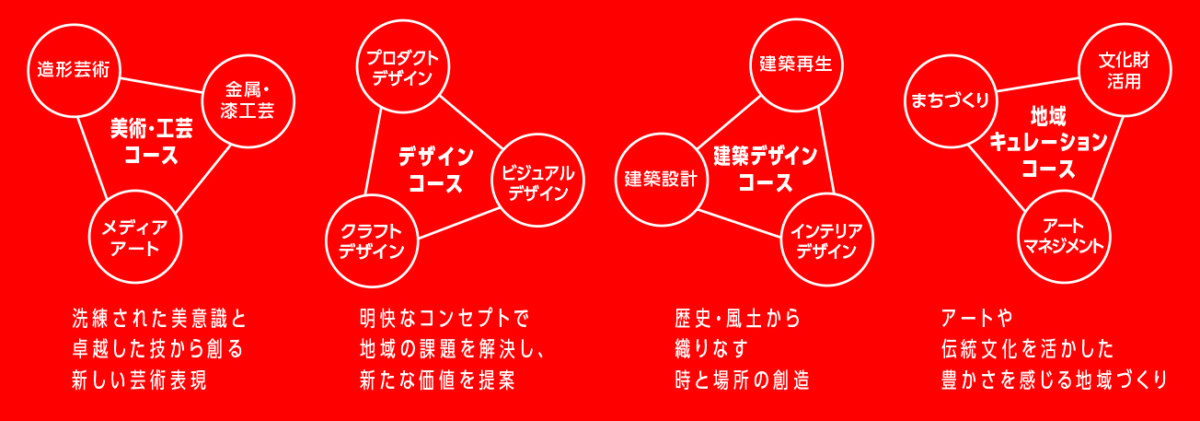Considering "Art and Culture": A New Design Field
In the inevitability of art history and industrial/technology history, the art field has been divided into many fields such as architecture, painting, sculpture, craft, and industrial design. It can be said that the role of (industrial) design in the 20th century was to “present new aesthetics in a capitalist society”.
However, the rapid industrial innovation and social transformation that originated in ICT in recent years are expelling the old concept and demanding new adaptation not only for people’s lives but also for the value of life. The role of design that is required in the future is to “present new humanity in the next era”, but it is difficult to realize through a single field. It requires the entire art field to work together.
We, at GEIBUN (School of Art and Design, University of Toyama), view “art and culture” as a new design field that fuses the various art fields. At the same time, it is a new architectural field, a new painting, sculpture, and contemporary art field, synonymous with a new craft field. Taking that into account, we believe that learning across multiple characteristics in multiple fields is useful in solving chaotic problems and provide integrated educational content and learning support.
Living with the Community
GEIBUN is in Takaoka City, Toyama Prefecture. It is a local city with severe problems, such as a declining birthrate, an aging population, a declining population, and an industrial shift. What are the characteristics of the school that is not located in a big city and has “art and culture”? And what can we do? Toyama prefecture has a lot of difficulties that arise at the intersection point of traditional industry and culture, and information technology society. For example, craftsmen working for local industrycannot find successors, and local people struggle to continue the local festivals that have been passed down for generations. At GEIBUN, we would like to see the problems in the region as the teaching tools, create “Monogatari”, which means finding values not only in things but also in experiences, with local residents, and share it with the world.

2021.7.2

 Return to List
Return to List